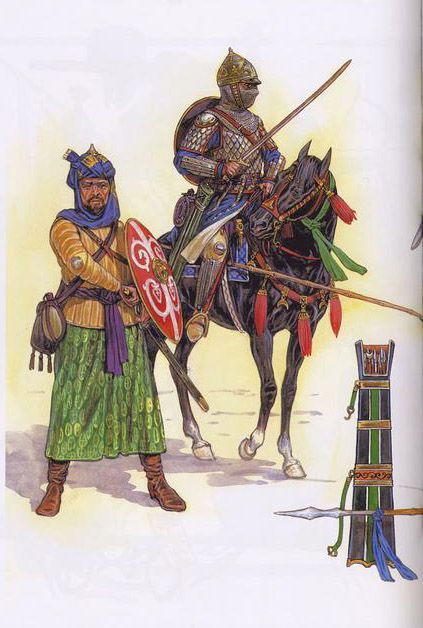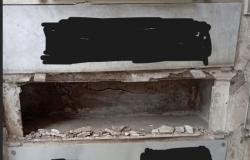From the splendid Alcazàr erected on the Saliceto hill, surrounded by towers, exotic gardens and Moorish fountains, the caliph dominated the surrounding area and lived there for a long time together with his forty wives. We are in the Alta Langa, along the Bormida, near Liguria. Abdul Ali’s great dream was to found an Arab kingdom in that area, which extended from Monviso to the coasts of Provence from where the Saracen had arrived with his raiders to plunder Piedmont just over a thousand years ago.
He didn’t succeed and when the caliph died his body was closed in a huge golden sarcophagus and buried in the earth, then the Saracens covered the ground with an oak forest to make every trace disappear. There are tales about the good life of the caliph in the Langhe but it is not just legend since our character is also mentioned in ancient Provençal chronicles. However, it is useless to go hunting for the remains of the Alcazàr in Saliceto because it was destroyed by the marquises of Monferrato who expelled the Moors from Piedmont and today, nothing remains of that residence. Between the 9th and 10th centuries Piedmont was invaded by the Saracens who came up our mountains and valleys from the sea, destroying and killing. Not much is known about these mujahideen of a thousand years ago but the traces of their journey have not completely disappeared. The book “Saracens in Piedmont, myth, reality and tradition” by Gianbattista Aimino and Gian Vittorio Avondo, Priuli&Verlucca, historically reconstructs the passage of the Saracens in the Piedmontese valleys “who left signs of which we can still find memory in the Occitan language, in the customs, in architecture and culture”. And what about the Susa Valley, one of the valleys most affected by Saracen violence. In Novalesa, the town of the ancient Benedictine abbey founded in 726, the devastating passage of the warriors of Islam who arrived from Provence in 906 is revoked every year with the sword dance.
The monks abandoned the monastery in time, taking with them the most precious objects including 6000 books. They took refuge in Turin at the church of Sant’Andrea (today the Consolata) to return to Novalesa at the end of the century. To escape the violence and looting of the Moors, local legends say, some villagers climbed the mountain and entered a tunnel that led to the French valley of Bessans. The Saracens chased them into the tunnel but the Novalicians, at the exit of the tunnel, caused a landslide which closed it while those who remained in the town blocked the entrance with other boulders. Thus the Saracens remained trapped there forever. Nobody knows where the tunnel is and according to legend the remains of the Saracens with all the stolen treasures are trapped inside the mountain. Garessio and Ormea were among the first Piedmontese towns to suffer the sackings of the Moors. Between the two locations on the top of a hill there is a watchtower called “Saracen Tower” erected by the local inhabitants when the Moors arrived from Frassineto (Fraxinetum) the current Saint-Tropez, on the French Riviera, to devastate the Val Tanaro. For some historians the tower dates back to the Byzantine period but for other scholars it was built by the Garessini themselves to control the movements of the Saracens from above who then, after the conquest, used it as a base for their incursions.

Today the Saracens no longer terrorize us but in the stories of the valley dwellers and farmers of Langhe. Monferrato and Acquese the figure of the Saracen has remained indelible thanks to events and legends that have been handed down over the centuries and have reached the present day. “A l’é un sarasin”, that’s a Saracen, the mountain people once said to indicate common scoundrels and criminals. The Moors were greatly feared a thousand years ago by the local populations and mothers, to scare away their overly rebellious children, warned them by saying “look, I’ll take you to Sarassin!”. At the time of the Saracens, at the beginning of the 9th century, Piedmont was part of the Carolingian empire which stretched over the territories of France, Germany and northern Italy. The Saracen presence is recalled in some folkloristic events in the western Alps and many festivals are inspired by the passage of these people coming from the Middle East, North Africa or the Balkans. Even today some valleys, such as in the Cuneo area and in Val Susa, preserve its memory. Just think of the Spadonari dances which take place between January and February in Giaglione, Venaus and Bagnasco in Val Tanaro and the Baìo which takes place every five years in some villages of Val Varaita. The Saracen presence is still felt today in the sayings, foods and products of the land. In memory of the Saracens, many words remain in our language, such as buckwheat, portcullis, shutter, surnames such as Moro, Negro. Saraceno and Taricco, from the Muslim general Tarik who conquered Spain. The same Crusades brought thousands of Europeans to the lands of the Near East and it is probable that the same corn came from the Middle East and not from the Americas as is believed, in the surroundings of Vinchio, in the Asti area, a particular type of ” Saracen asparagus” and in Val Tanaro Saracen polenta… in short, this precious seed is among the many gifts that the Moorish invasions left us in addition to the popular traditions, words and legends that enrich the historical and cultural heritage of Piedmont as well described in the their book Avondo and Aimino.
Philip King
Read the latest news here: THE TORINESE






